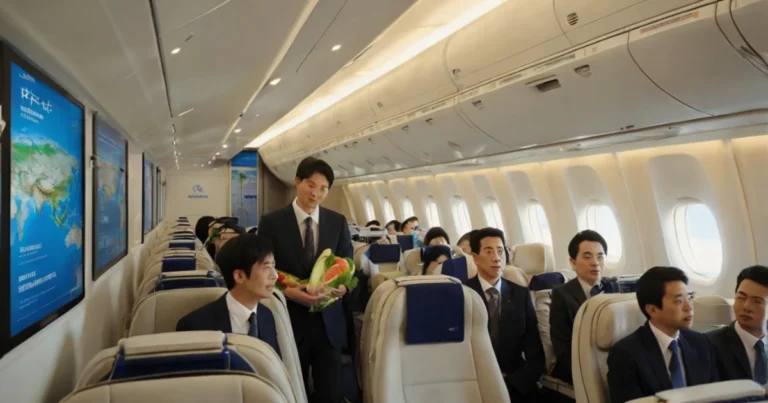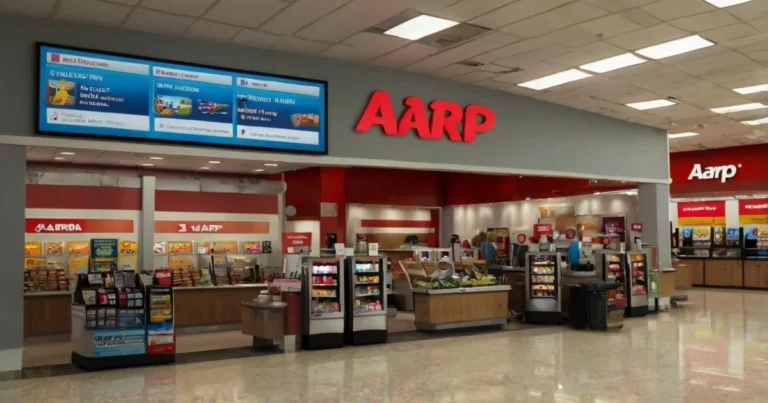15 Best Game Reserves in Africa
Africa is a continent of unparalleled natural beauty, where wildlife roams freely across vast landscapes. It’s no wonder that Africa is one of the top destinations for safari enthusiasts from around the globe. The continent has many game reserves, each offering a unique blend of wildlife, scenery, and cultural experiences. Whether you’re looking to witness the Great Migration, encounter the Big Five, or simply immerse yourself in the wild, Africa’s game reserves have something for everyone. Let’s explore Africa’s 15 best game reserves that should be on every traveler’s bucket list.
Table of Contents
Toggle
1. Maasai Mara National Reserve, Kenya
The Maasai Mara National Reserve is arguably one of the most famous game reserves in the world. Located in southwestern Kenya, this reserve is known for its stunning landscapes and abundant wildlife. The Maasai Mara is perhaps most famous for the Great Migration, where over two million wildebeest, zebras, and gazelles make their perilous journey from the Serengeti to the Mara in search of fresh grazing grounds.
This reserve is also home to the Big Five—lion, elephant, buffalo, leopard, and rhinoceros—making it a prime destination for big game enthusiasts. For the best experience, visit between July and October when the migration is in full swing, offering dramatic river crossings and predator-prey interactions.
2. Kruger National Park, South Africa
Kruger National Park is one of Africa’s largest game reserves, spanning nearly 20,000 square kilometers. Located in northeastern South Africa, Kruger is renowned for its high density of wildlife, including the Big Five, cheetahs, giraffes, and an incredible variety of birds. The park offers a wide range of accommodation options, from basic camping sites to luxury lodges, making it accessible to all types of travelers.
One of the unique features of Kruger is its self-drive safaris, allowing visitors the freedom to explore at their own pace. The park is well-maintained with a network of roads, rest camps, and waterholes, making it an ideal destination for both novice and experienced safari-goers.
3. Serengeti National Park, Tanzania
Serengeti National Park is synonymous with the word “safari.” This vast, iconic park is located in northern Tanzania and extends into Kenya, where it joins the Maasai Mara. The Serengeti is most famous for its annual wildebeest migration, one of the most spectacular wildlife events on the planet. Each year, millions of wildebeest, accompanied by zebras and gazelles, make their way across the plains in a continuous cycle of life and death.
Beyond the migration, the Serengeti is home to a diverse array of wildlife, including large lion pride, elusive leopards, and massive elephant herds. The park’s varied landscape—from grassy plains to riverine forests—provides a stunning backdrop for any safari experience.
4. Okavango Delta, Botswana
The Okavango Delta in Botswana is a unique and breathtaking wetland system. Unlike any other game reserve, the Delta is formed by the Okavango River, which floods the Kalahari Desert each year, creating a lush, waterlogged oasis amid arid surroundings. This natural wonder is home to a rich variety of wildlife, including hippos, crocodiles, elephants, and countless bird species.
One of the most special ways to experience the Okavango Delta is by mokoro, a traditional dugout canoe. This allows you to glide silently through the waterways, getting up close and personal with the wildlife. The best time to visit the Okavango Delta is during the dry season (June to October), when the floodwaters are at their peak, and animals concentrate around the water sources.
5. Chobe National Park, Botswana
Chobe National Park, located in northern Botswana, is renowned for its large elephant population, considered one of the largest in the world. The park’s proximity to the Chobe River means that water-based safaris are a popular activity here. Cruising along the river, visitors can observe elephants, buffalo, and hippos from the comfort of a boat, offering a different perspective than traditional land safaris.
Chobe is also a birdwatcher’s paradise, with over 450 bird species recorded in the park. The best time to visit Chobe is during the dry season (May to October), when animals are more likely to congregate along the riverbanks.
6. Etosha National Park, Namibia
Etosha National Park in Namibia is a place of stark beauty and unique wildlife. The park is dominated by the vast Etosha Pan, a salt flat that fills with water during the rainy season, attracting flamingos and other waterbirds. Around the edges of the pan, waterholes provide vital resources for the park’s wildlife, making them excellent spots for game viewing.
Etosha is home to several species that have adapted to the arid environment, including desert elephants, black rhinoceroses, and the striking oryx. Visitors can explore the park in their own vehicles or join guided tours. The park’s well-maintained campsites and lodges offer a range of accommodation options.
7. Hwange National Park, Zimbabwe
Hwange National Park, the largest game reserve in Zimbabwe, is famous for its enormous elephant herds, which are among the largest in Africa. The park’s diverse habitats, ranging from semi-desert to dense woodland, support a wide variety of wildlife, including lions, leopards, wild dogs, and more than 400 bird species.
Hwange’s location near Victoria Falls makes it an ideal addition to any Zimbabwean safari itinerary. The park offers a variety of accommodation options, from basic campsites to luxurious lodges, and is accessible by road and air.
8. Addo Elephant National Park, South Africa
Addo Elephant National Park, located in the Eastern Cape of South Africa, was originally established to protect the dwindling elephant population in the area. Today, it is home to over 600 elephants, along with lions, buffalo, black rhinoceroses, and a variety of other wildlife.
Addo is unique in that it offers a “Big Seven” experience, including great white sharks and southern right whales, which can be seen along the park’s coastal section. The park is family-friendly and offers a range of accommodation options, from camping to luxury lodges, making it an excellent choice for families and first-time safari-goers.
9. Ngorongoro Crater, Tanzania
The Ngorongoro Crater, located in northern Tanzania, is one of the most remarkable geological wonders in Africa. Formed millions of years ago when a massive volcano erupted and collapsed, the crater is now a natural enclosure for an incredible diversity of wildlife. The crater’s lush grasslands, acacia forests, and freshwater lakes support a high concentration of animals, including elephants, lions, and the critically endangered black rhinoceros.
In addition to its wildlife, the Ngorongoro Crater is also a cultural treasure, with the Maasai people living in the surrounding conservation area. Visitors can experience a rich blend of wildlife and culture, making it a unique safari destination.
10. Sabi Sands Game Reserve, South Africa
Sabi Sands Game Reserve is a private reserve adjacent to Kruger National Park, offering an exclusive and intimate safari experience. Known for its luxurious lodges and close-up wildlife encounters, Sabi Sands is particularly famous for its leopard sightings, which are among the best in Africa.
The reserve’s private nature means that visitor numbers are limited, allowing for personalized experiences with expert guides. Night drives and off-road safaris are also permitted, offering a different perspective on the African bush and its nocturnal inhabitants.
11. Moremi Game Reserve, Botswana
Moremi Game Reserve, located within the Okavango Delta, is a diverse and wildlife-rich area that offers some of the best game viewing in Botswana. The reserve’s mix of floodplains, forests, and lagoons attracts a wide variety of animals, including elephants, lions, and the elusive African wild dog.
Moremi is a fantastic destination for those seeking a more remote and authentic safari experience. The reserve offers both land and water-based safaris, with mokoro excursions providing a serene and immersive way to explore the Delta’s waterways.
12. Volcanoes National Park, Rwanda
Volcanoes National Park in Rwanda is most famous for its population of endangered mountain gorillas. Trekking through the park’s dense forests to spend time with these magnificent creatures is one of the most profound wildlife experiences on Earth. The park is part of the Virunga Mountain range, which is home to several dormant volcanoes, adding to the dramatic landscape.
In addition to gorilla trekking, visitors can hike to the top of the volcanoes, visit Dian Fossey’s research center, and explore the local culture. Volcanoes National Park plays a crucial role in Rwanda’s conservation efforts and tourism industry.
13. Tarangire National Park, Tanzania
Tarangire National Park, located in northern Tanzania, is known for its vast elephant herds and iconic baobab trees. During the dry season, the Tarangire River becomes a lifeline for the park’s wildlife, attracting elephants, zebras, wildebeest, and other animals in large numbers.
Compared to some of Tanzania’s more famous parks, Tarangire is less crowded, offering a more peaceful and intimate safari experience. The park’s varied landscape, with its swamps, acacia woodlands, and open plains, provides diverse habitats for a wide range of species.
14. South Luangwa National Park, Zambia
South Luangwa National Park in Zambia is often referred to as one of Africa’s best-kept secrets. This remote and wild park is known for its walking safaris, which offer a unique and thrilling way to experience the African bush. Led by experienced guides, walking safaris allow visitors to get up close and personal with wildlife and learn about the park’s intricate ecosystems.
South Luangwa is home to an abundance of wildlife, including lions, leopards, hippos, and over 400 species of birds. The Luangwa River is the park’s lifeblood, and its oxbow lagoons and floodplains attract a variety of animals, making it a prime destination for wildlife enthusiasts.
15. Samburu National Reserve, Kenya
Samburu National Reserve, located in northern Kenya, is known for its unique wildlife and rich cultural heritage. The reserve is home to species that are not found in other parts of Kenya, such as the Grevy’s zebra, reticulated giraffe, and Somali ostrich. This makes it a must-visit destination for those looking to see something different on their safari.
In addition to its wildlife, Samburu offers cultural experiences with the Samburu people, who have lived in harmony with the land for generations. The reserve’s rugged landscape, with its dry riverbeds and rocky hills, provides a stunning backdrop for any safari adventure.
Conclusion
Africa’s game reserves are some of the most extraordinary places on Earth, offering a window into the continent’s rich biodiversity and natural beauty. Each reserve has its unique charm, whether it’s the epic migrations of the Serengeti, the tranquil waterways of the Okavango Delta, or the remote wilderness of South Luangwa. Visiting these reserves not only provides unforgettable wildlife experiences but also supports crucial conservation efforts that protect Africa’s incredible wildlife for future generations.
FAQs
1. What is the best time of year to visit African game reserves?
The best time to visit depends on the specific reserve and the wildlife you want to see. Generally, the dry season (June to October) is ideal for game viewing as animals congregate around water sources.
2. How do I choose the best game reserve for my safari?
Consider what wildlife you want to see, the type of safari experience you prefer (luxury vs. budget, self-drive vs. guided), and the landscape you’re most interested in. Researching the specific attractions of each reserve can help narrow down your choices.
3. Are game reserves in Africa safe for tourists?
Yes, game reserves in Africa are generally safe for tourists. It’s important to follow the guidance of your safari guides and adhere to park rules to ensure your safety.
4. What is the difference between a game reserve and a national park?
A game reserve is typically privately owned and managed, often offering more exclusive and personalized safari experiences. National parks are usually government-owned and may be larger and more accessible to the public.
5. Can I visit multiple game reserves in one trip?
Absolutely! Many travelers combine visits to multiple reserves within one country or even across borders. For example, a trip to East Africa might include both the Serengeti and Maasai Mara, while a southern Africa safari could combine Kruger National Park with Chobe National Park.






